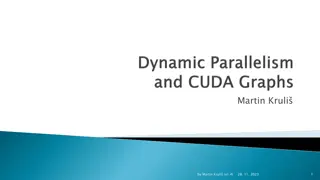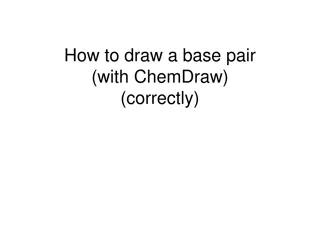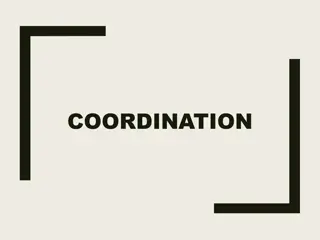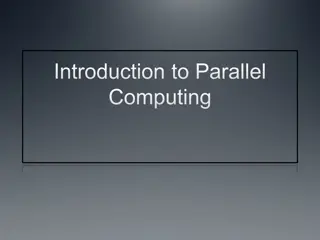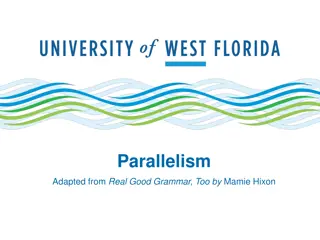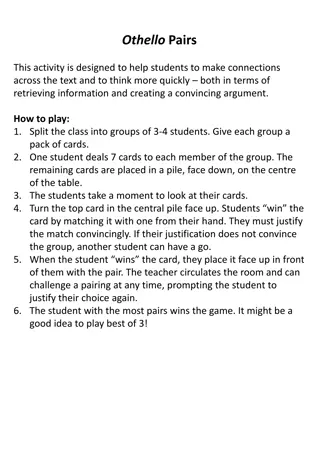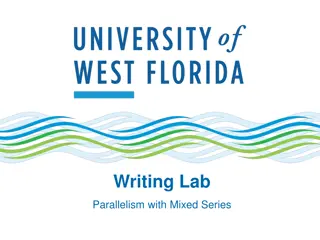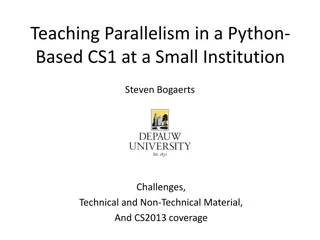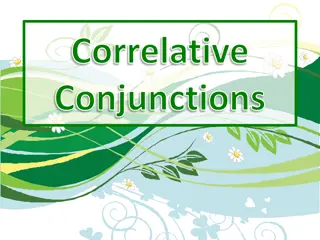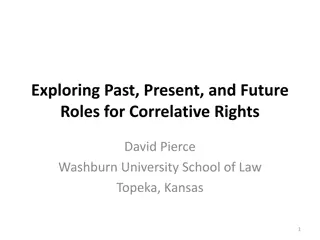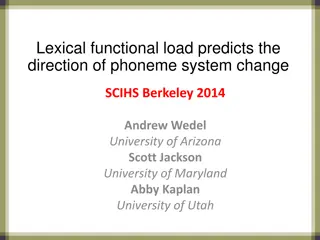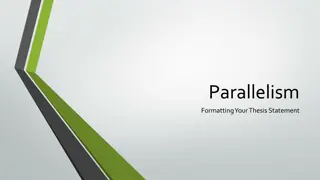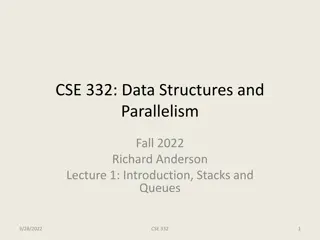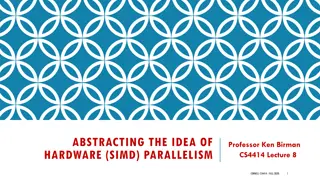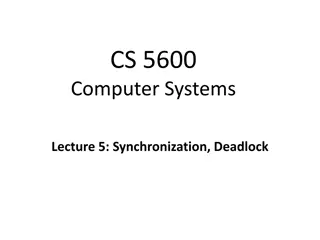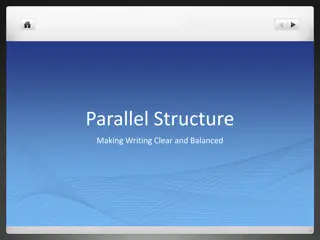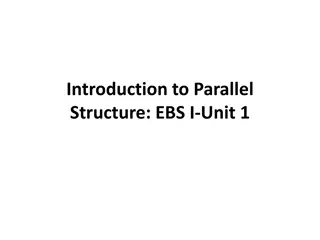Mastering Parallelism: Understanding Correlative Pairs in Writing
Explore the importance of parallelism in correlative pairs in writing using frequently used conjunctions like Both/and, Either/or, and more. Learn to identify and correct common errors in correlative pairs to enhance the clarity and coherence of your writing. Dive into this insightful lesson brought to you by the UWF Writing Lab Grammar Mini-Lesson Series, adapted from "Real Good Grammar, Too" by Mamie Webb Hixon.
Download Presentation

Please find below an Image/Link to download the presentation.
The content on the website is provided AS IS for your information and personal use only. It may not be sold, licensed, or shared on other websites without obtaining consent from the author.If you encounter any issues during the download, it is possible that the publisher has removed the file from their server.
You are allowed to download the files provided on this website for personal or commercial use, subject to the condition that they are used lawfully. All files are the property of their respective owners.
The content on the website is provided AS IS for your information and personal use only. It may not be sold, licensed, or shared on other websites without obtaining consent from the author.
E N D
Presentation Transcript
Writing Lab Parallelism: Correlative Pairs
Parallelism: Correlative Pairs Items in a series should be balanced or coordinated; that is, to indicate the same rank and role of items in a series or to indicate equality of these ideas, writers of standard written English must employ parallel grammatical constructions. In order to ensure that these are grammatically similar, the writer conveys his or her message in parallel language. Some writers make a construction appear to be parallel when actually it is not by incorrectly mixing the parts of correlative pairs.
Frequently Used Correlative Conjunctions Both and Either or Just as so Neither nor Not only but also Whether or
Correlative pair is neither nor. Incorrect: I readily admitted that I had neither interest or need for this seminar Correct: I readily admitted that I had neither interest nor need for this seminar.
Correlative pair is not only but also. Incorrect: The Beatles were talented not only as performers but as composers. Correct: The Beatles were talented not only as composers but also as composers.
Thats all, folks! This lesson is part of the UWF Writing Lab Grammar Mini-Lesson Series Lessons adapted from Real Good Grammar, Too by Mamie Webb Hixon To find out more, visit the Writing Lab s website where you can take a self-scoring quiz corresponding to this lesson


